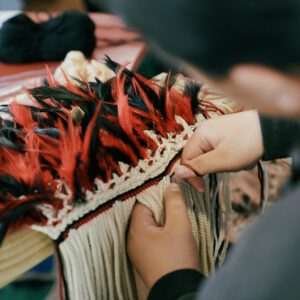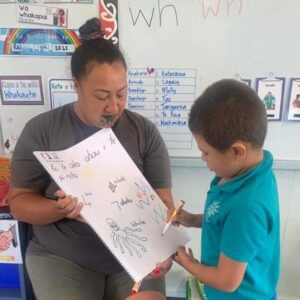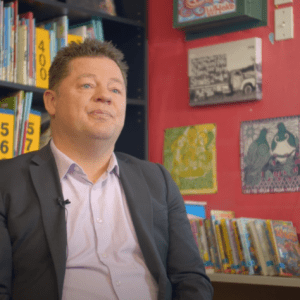Evelyn Henare, tumuaki of Te Kura Kaupapa Māori o Te Rawhiti Roa, usually spends most of her waking hours at the kura.
Adjusting to home-based mahi has had its good side, though.
“It’s actually quite nice to be at home, I suppose. I usually live at the kura!” she jokes. “I’ve had to find my way to the stove … I even did some baking.”
Her first priority since the lockdown, however, has been the wellbeing of the kura whānau. “Have they got enough kai? Are they okay?”
And the next priority is keeping up with the news from the Ministry of Education, as well as promoting positivity within the school whānau via Facebook and connecting with other staff members.
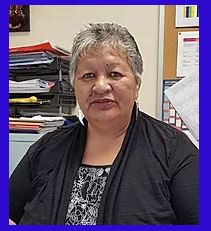
Te Kura Kaupapa Māori o Te Rawhiti Roa is in Tikipunga, a northern suburb of Whangārei, and is the only kura kaupapa Māori in the district. It is a composite school (Years 1 to 15), and currently has about 200 students. Some whānau travel up to 50 kilometres each day to take their tamariki there, many from rural areas.
While the curriculum is Te Marautanga o Aotearoa, Te Aho Matua (the kura kaupapa philosophy) has always sat within that curriculum. “You didn’t see it written,” says Henare, “but it was there. The wairua element, whanaungatanga, aroha ki te whānau, aroha ki te tamaiti.”
The kura was going strong, with strong whānau support, until the time of the closure, she says. Before the lockdown began, every effort was made to give the tamariki some take-home learning tasks. “We only had a day to get ourselves organised and close down. I thought we did really well in the short time we had. I was really pleased with the standard of work that went out.”
“I said, just use whatever books we have in this kura, [and they] will go out to our whānau! I’m not worried about a book that doesn’t come back. It’s about getting those resource packs out to our whānau.”
Evelyn Henare
“Before Covid-19 came, I had said to wharekura staff to start looking at a homework pack for the students towards NCEA Level 3 – so they were ready,” says Henare. “The kura teina [the younger school] was a bit harder. I said, just use whatever books we have in this kura, [and they] will go out to our whānau! I’m not worried about a book that doesn’t come back. It’s about getting those resource packs out to our whānau.”
Kai packs from KidsCan were also distributed. Usually this food is only allowed to be eaten at school, but Henare explains, “They allowed us to use what we had to give out to whānau.”
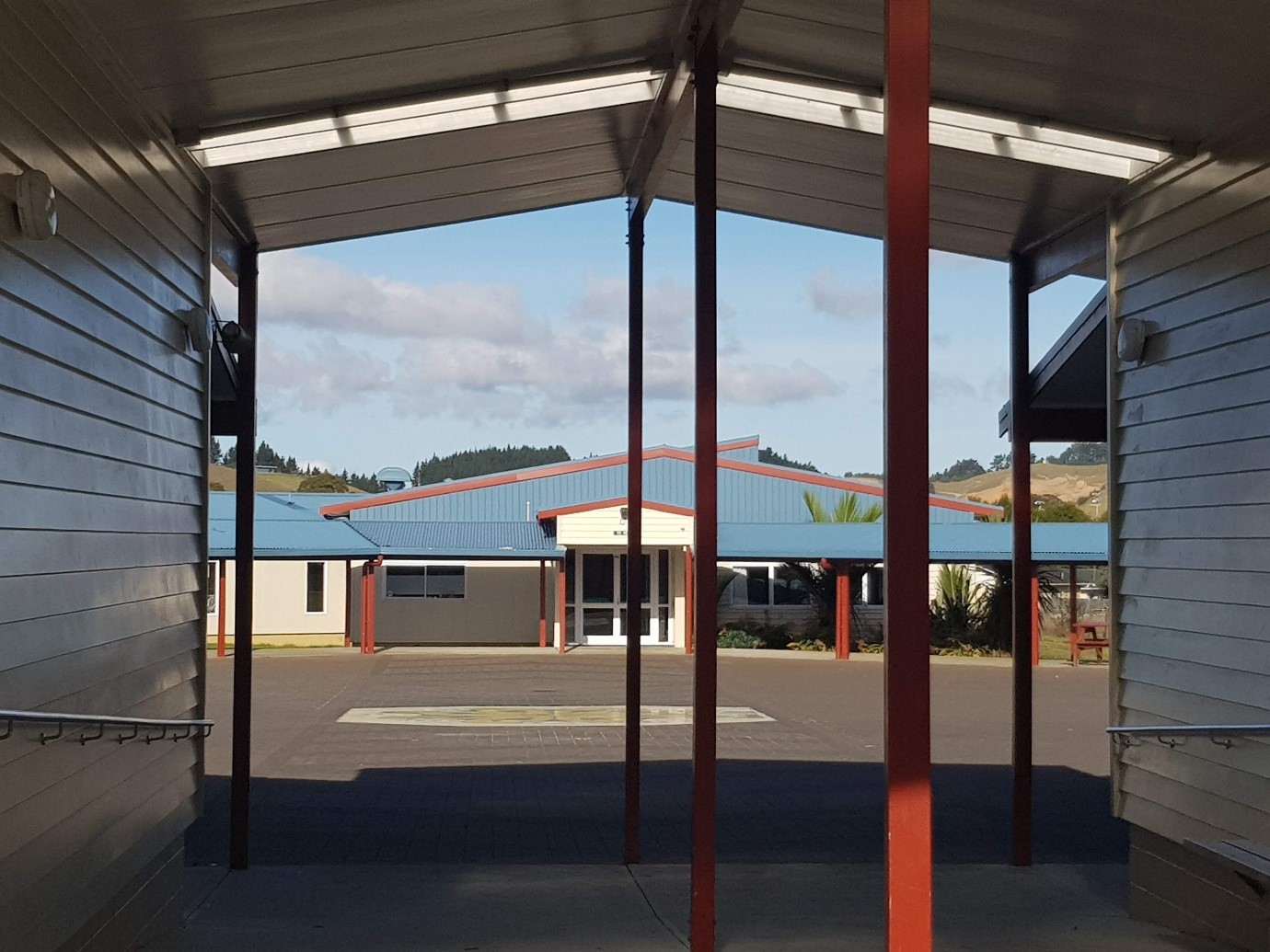
Though the Ministry of Education has brought the school holidays forward, Henare and her staff are continuing to think about ongoing learning for the tamariki. Tablets and Chromebooks have been introduced for school use, but so far only the seniors have been allowed to take the Chromebooks home. Tablets have been leased for at-school use only. She has been discussing it with Ministry officials.
“Our devices are insured for on the school grounds and have locks on them. The ministry has said it would pay insurance for these devices to go off-site,” she explains. “But it’s the whole logistics – the kids have a contract from the school [for using the computers at school]. I’ve got my IT lady drafting up a new contract, but how do we get the whānau to sign it, how do we get the students to sign it? Do they have capability to print off? No, they don’t! How are they going to get the device? I can’t go to the kura. It’s really hard.”
Henare also needs convincing about the use of devices in homes. “How do we monitor that, the safe use of computers? We can track it when they’re in school, but we could be opening ourselves up [to problems] if the parents are not going to monitor [what the kids watch]. But we’ve got to think about the good things, I suppose.”
She has also posted homework packs – A4 files in A3 bags – through NZ Post, but has yet to find out if they have reached their destinations. The next step is to gather further information. “I’m going to get all my management onto ringing the whānau and hear, ‘yes, I’ve got my pack,’ or ‘yes, I have wifi,’ ‘no, I don’t have a device.’”
A lack of internet connectivity for most of the whānau, due to low income or location, and social issues in the home are also obstacles to establishing home-based learning.
“Not everyone is in a situation where they can keep to a routine, get the kids up, give them kai before doing schoolwork,” says Henare. “It will work for five percent of my whānau in the kura, and for the rest of the 95 percent, it’s not going to work. There are social issues at home. A lot of whānau have four or five kids. I worry.”
“Not everyone is in a situation where they can keep to a routine, get the kids up, give them kai before doing schoolwork.”
Evelyn Henare
So far, whānau appear to be coping well with the lockdown restrictions, she says, with no issues or problems that she’s heard of. But online learning is far from happening for most tamariki at the kura, and they could miss out further if the lockdown is extended.
Despite this uncertainty, the staff community continues to work hard, and Henare is also positive about the wider community. “There is a lot of support in place, for not only kura whānau, but whanau Māori, with hapū and iwi around them in Tai Tokerau and Whangārei, and so many organisations out there doing things as well. Kai packages, care packages, everything. I hope it’s getting to those who need it.”

And the kura is confident that the strength of their loving care for the tamariki over the years has built resilience and positive relationships for the children within their whānau.
“Me taku mohio ka whiti te rā, ngā rā kei te haere mai, nā ngā tamariki nei, ngā tino rangatira mā āpōpō, nā te kaha ō tātou ki te ako i a rātou, ki te whāngai i a rātou,” says Kahore Anania, kaiārahi i te reo and principal speaker at the kura. “I know that the sun will shine in the days to come, from these children, the leaders of tomorrow, by the strength of our teaching and our care for them.”

